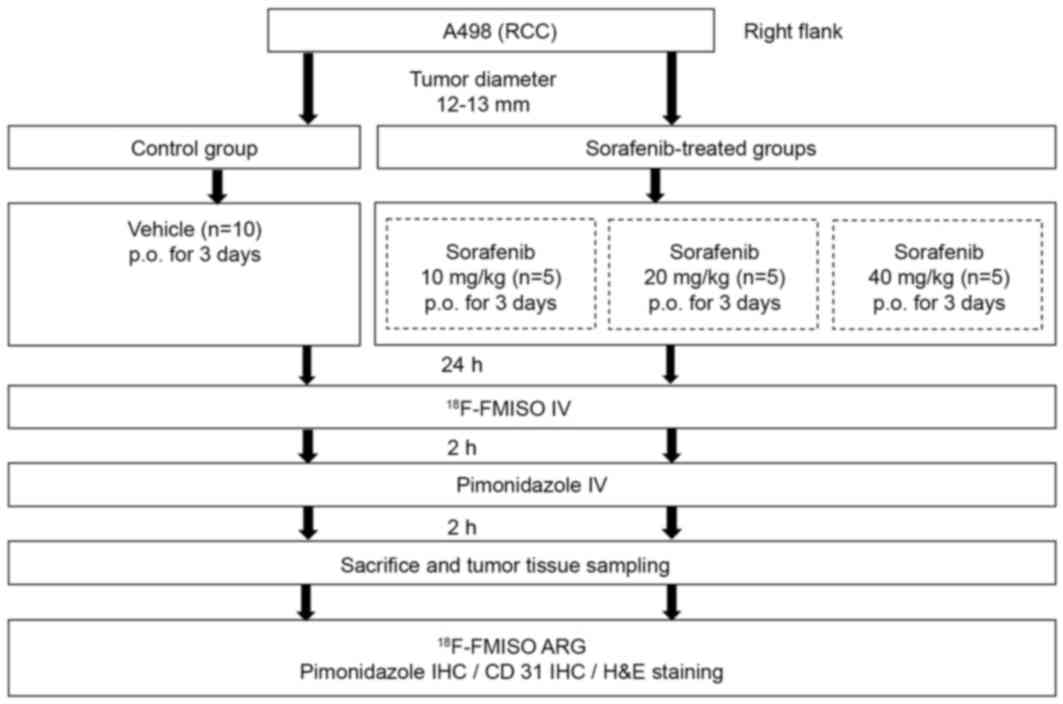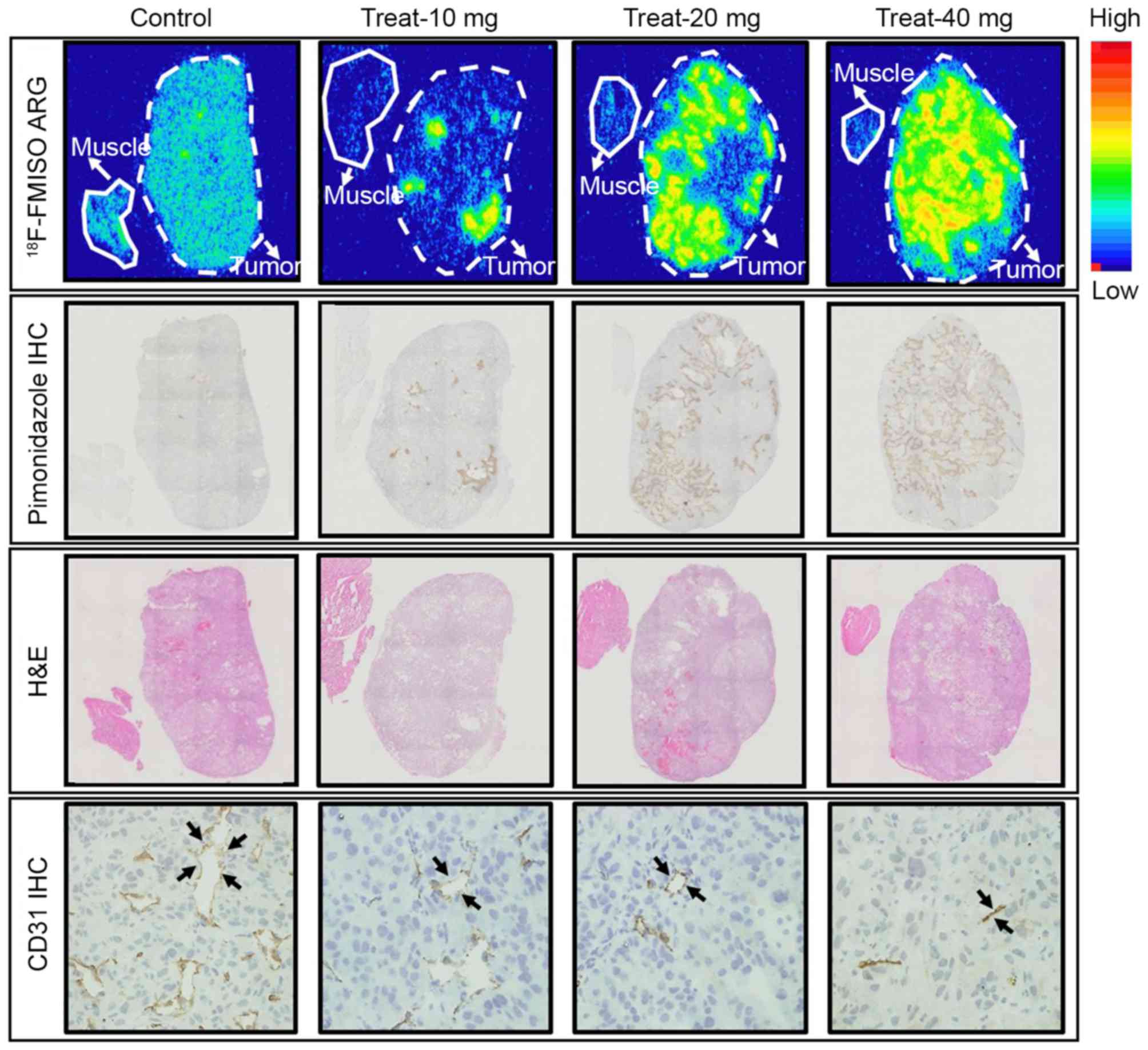Changes in tumor oxygen state after sorafenib therapy evaluated by 18F-fluoromisonidazole hypoxia imaging of renal cell carcinoma xenografts
- Authors:
- Published online on: June 12, 2017 https://doi.org/10.3892/ol.2017.6371
- Pages: 2341-2346
Metrics:
Total
Views: 0 (Spandidos Publications: | PMC Statistics:
)
Total PDF Downloads: 0 (Spandidos Publications: | PMC Statistics:
)
Abstract
A mechanistic dissociation exists between tumor starvation and vascular normalization after antiangiogenic therapy. Thus, improved understanding of tumor responses (tumor starvation or vascular normalization) is important for optimizing treatment strategies. 18F‑fluoromisonidazole (18F‑FMISO) is widely used for imaging tumor hypoxia. To clarify the tumor response to the antiangiogenic drug sorafenib, the present study evaluated the changes in the tumor oxygen state using 18F‑FMISO in mice bearing a renal cell carcinoma xenograft (A498). Mice bearing A498 xenografts were assigned to the control and three sorafenib‑treatment groups and administered sorafenib (0, 10, 20 or 40 mg/kg/day, per os) once daily for 3 days. Following one day after the final administration, the mice were injected with 18F‑FMISO and pimonidazole (a hypoxia marker). 18F‑FMISO accumulation in the tumor was determined by autoradiography. Immunohistochemistry of pimonidazole and cluster of differentiation (CD)31 (a vascular marker) was also performed. 18F-FMISO accumulation levels in the tumor significantly increased by 4.3‑, 8.4‑ and 8.6‑fold compared with in the control group following 10, 20 and 40 mg/kg sorafenib treatments, respectively [0.07±0.04, 0.32±0.11, 0.62±0.15 and 0.63±0.23 (%ID/m2) x kg for the control, and 10, 20 and 40 mg treatments, respectively; all P<0.0083 vs. the control]. The number of pimonidazole‑positive cells also significantly increased by 6.8‑, 12.3‑ and 20.2‑fold compared with in the control group following 10, 20 and 40 mg/kg sorafenib treatments, respectively (0.78±0.79, 5.36±2.29, 9.66±1.58 and 15.85±4.59% pimonidazole‑positive cells; all P<0.0083 vs. the control). The number of microvessels in tumors markedly decreased to 33.5, 17.6, and 14.0% of the control following 10, 20 and 40 mg/kg sorafenib treatments, respectively (17.1±2.5, 5.7±1.0, 3.0±1.0 and 2.4±0.3 vessels/mm2; P<0.0083 vs. the control). The 18F‑FMISO expression level in the tumor increased sorafenib‑dose‑dependently, which is consistent with the increase in the number of pimonidazole‑positive cells and decrease in the number of microvessels. These findings indicated that the present sorafenib treatment protocol induces ‘tumor hypoxia/starvation’ in the renal cell carcinoma xenograft (A498) due to its antiangiogenic properties.













